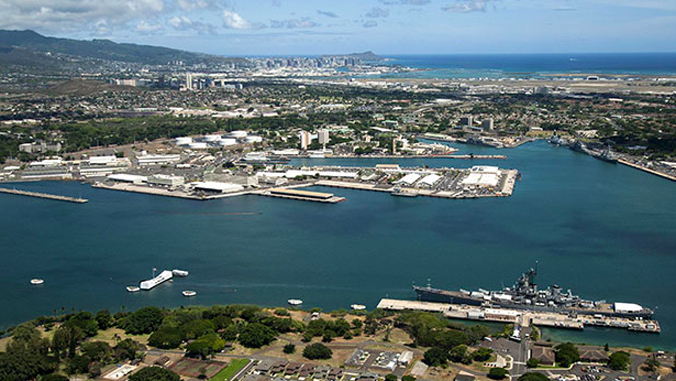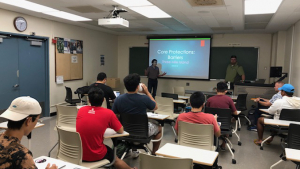
A new nuclear energy and engineering course offered every spring semester in University of Hawaiʻi at Mānoa’s College of Engineering is benefitting both students and Department of Defense industry partners.
Launched in spring 2023, the course is taught by five Pearl Harbor Naval Shipyard (PHNSY) nuclear engineers, led by Brian Barron and Matt Cook. Department of Mechanical Engineering Professor Marvin Young, who serves as the faculty coordinator/advisor for the course, noted that the students benefited tremendously from being taught by practicing engineers who shared their technical knowledge and real-world experiences.

The nuclear class supports the College of Engineering’s efforts to complement its engineering curriculum with applied engineering opportunities that provide real-world engineering experiences before students start their careers.
“It’s courses like this one, where the educational experience of our students intersects real-world applications of what they learn, that allows our graduates to get a head start on their careers and be far more marketable to their future employers,” College of Engineering Dean Brennon Morioka said.
Importance of nuclear energy
Nuclear energy is a unique source of energy, which needs to be properly engineered and controlled to protect the safety and health of people and the environment. Nuclear power generated under proper controls provides more energy per mass of fuel than any current form of power generation. Currently, the national power grid relies heavily on nuclear energy and the U.S. Navy uses nuclear energy as the sole power source on submarines and aircraft carriers.
The course was initially offered to mechanical engineering seniors with plans to include sophomores, juniors and other majors. The course begins with an introduction to the fundamentals of nuclear energy and engineering principles. The theory of nuclear reactors, radioactivity and nuclear design fundamentals as applied to electrical power generation, space power and radiation detection are also covered. The course incorporates a laboratory experience in which the students measure the half-life of various radiation isotopes and the effect of shielding materials on radiation output.
According to Young, students come to the class with various thoughts about nuclear energy. Students learn how various types and sources of radiation interact with matter and how these interactions ultimately affect matter. They learn how the nuclear energy process works and is controlled.
“I initially joined the class with the intention of learning about viable power sources for spacecrafts designed for deep space travel. However, during the course, I gained a deeper understanding of the benefits of nuclear power and why it should be prioritized as a primary source of electricity for the world,” student Grayson Taeza-Gutter said.
Initiative’s beginnings
The initiative began with a call from PHNSY’s former head nuclear engineer Raphael Hong to Young. According to Hong, PHNSY was interested in providing students a basic knowledge of nuclear energy and its many possible applications that help them with their careers in PHNSY.
“This partnership between the shipyard and UH provides a perfect example of how industries and academics collaborate in building technical depth and expertise necessary in the State of Hawaiʻi,” Hong said.

